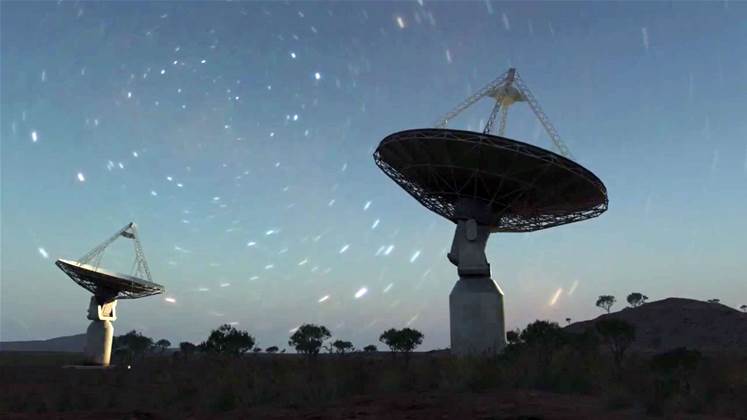The media regulator revised provisions around a 'radio quiet zone' in Western Australia as part of a bid to strengthen Australia's chances of hosting the international Square Kilometre Array telescope project.

The zone, first established in 2005, governs a 150-kilometre radius surrounding the Murchison Radioastronomy Observatory in central Western Australia which prioritises radio frequencies for radioastronomy above other uses.
Revised provisions, formalised on Friday, expanded the frequency range from an initial bottom end of 100 MHz to 70 MHz, and a height of 25.25 GHz.
Radioastronomy would be given first priority for all licenses falling within the frequency range in a 70-kilometre radius of the observatory. Those applying for a license within the frequency in a 150-kilometre radius would be required to consult with the observatory first.
The area's relative quiet had been deemed vital for the observatory functioning properly as part of Australia and New Zealand's joint bid to host the Square Kilometre Array (SKA).
The International Centre for Radio Astronomy Research, one of the research partners involved in the Australian SKA bid, said the radio quiet area was vital to the telescope's success locally.
"This radio quietness, a result of the low population density and consequent low level of development, ensures the SKA can receive the incredibly faint signals from the distant Universe," radioastronomer and ICRAR director, Peter Quinn, wrote in a submission to the regulator last year.
SKA project coordinators were expected to choose between locating the radiotelescope array in either Australia and New Zealand or in southern Africa by February.
According to Quinn, "the South African site, with higher levels of development and population, will have difficulties competing with Aus/NZ in this critical aspect of SKA science capabilities".
Changes to the radio quiet zone had faced opposition when proposed by ACMA last year. Satellite and mining operators, as well as the Department of Defence, viewed the notion as a heavy-handed attempt to protect radioastronomy services at the risk of other operations in the area.
Defence in particular had demanded meetings with ACMA on the issue. CSIRO SKA director Brian Boyle told iTnews it had met with the department to resolve any issues.
The Western Australian Government, which had also made legislative changes in favour of the project, warned the regulator nearby utilities and mining operations could be at risk under ACMA's proposal.
The regulator hoped a memorandum of understanding established by the state and federal governments, along with technical guidelines to be drafted by CSIRO, would ease any further concerns from industry.
"These enhanced legislative measures are incredibly important to reassure the international community that we not only have an outstanding radio quiet site but that radio quiet site can be guaranteed and protected essentially for the lifetime of the SKA; over the 50-year or more period," Boyle said.
The $2.1 billion global project could see a 3000-dish array deployed across Australia and New Zealand, with further involvement from a total of 20 nations.
It is expected to survey the sky 10,000 times faster than any other telescope, generating an exabyte of data per day when launched in 2024.


_(20).jpg&h=140&w=231&c=1&s=0)

.png&h=140&w=231&c=1&s=0)




_(26).jpg&w=100&c=1&s=0)

 iTnews Executive Retreat - Security Leaders Edition
iTnews Executive Retreat - Security Leaders Edition












_(1).jpg&h=140&w=231&c=1&s=0)



